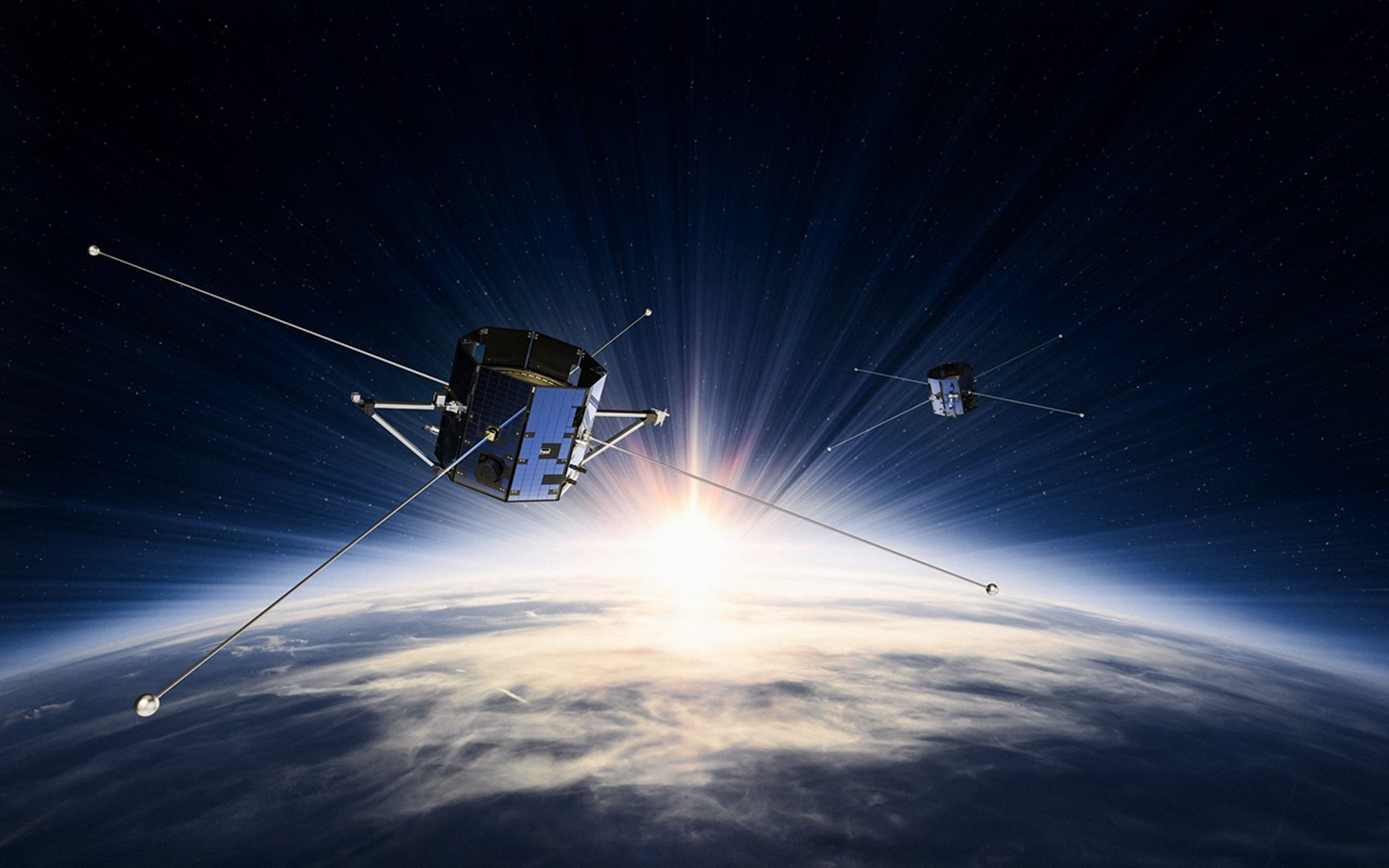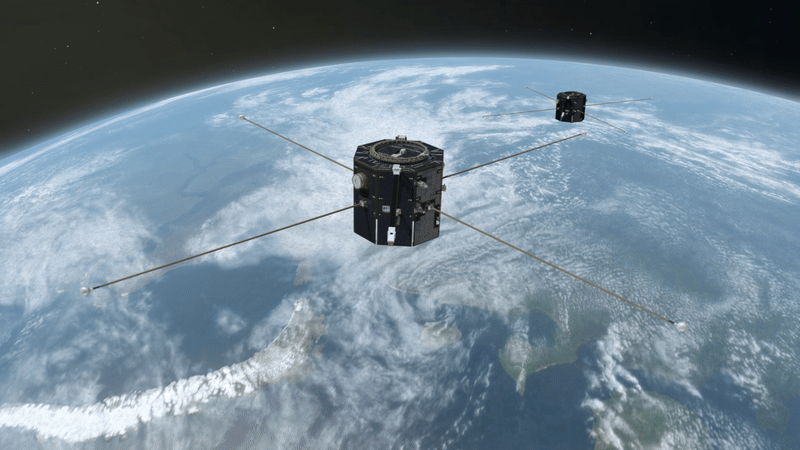
High above us, particles from the Sun hurtle toward Earth, colliding with the upper atmosphere and creating powerful explosions in a murky process called magnetic reconnection. A single magnetic reconnection event can release as much energy as the entire United States uses in a day.
NASA's new TRACERS (Tandem Reconnection and Cusp Electrodynamics Reconnaissance Satellites) mission will study magnetic reconnection, answering key questions about how it shapes the impacts of the Sun and space weather on our daily lives.
The TRACERS spacecraft are slated to launch no earlier than late July 2025 aboard a SpaceX Falcon 9 rocket from Space Launch Complex 4 East at Vandenberg Space Force Base in California. The two TRACERS spacecraft will orbit Earth to study how the solar wind - a continuous outpouring of electrically charged particles from the Sun - interacts with Earth's magnetic shield, the magnetosphere.
What Is Magnetic Reconnection?
As solar wind flows out from the Sun, it carries the Sun's embedded magnetic field out across the solar system. Reaching speeds over one million miles per hour, this soup of charged particles and magnetic field plows into planets in its path.
"Earth's magnetosphere acts as a protective bubble that deflects the brunt of the solar wind's force. You can think of it as a bar magnet that's rotating and floating around in space," said John Dorelli, TRACERS mission science lead at NASA's Goddard Space Flight Center in Greenbelt, Maryland. "As the solar wind collides with Earth's magnetic field, this interaction builds up energy that can cause the magnetic field lines to snap and explosively fling away nearby particles at high speeds - this is magnetic reconnection."
Openings in Earth's magnetic field at the North and South Poles, called polar cusps, act as funnels allowing charged particles to stream down towards Earth and collide with atmospheric gases. These phenomena are pieces of the space weather system that is in constant motion around our planet - whose impacts range from breathtaking auroras to disruption of communications systems and power grids. In May 2024, Earth experienced the strongest geomagnetic storm in over 20 years, which affected high-voltage power lines and transformers, forced trans-Atlantic flights to change course, and caused GPS-guided tractors to veer off-course.
How Will TRACERS Study Magnetic Reconnection?
The TRACERS mission's twin satellites, each a bit larger than a washing machine, will fly in tandem, one behind the other, in a relatively low orbit about 360 miles above Earth. Traveling over 16,000 mph, each satellite hosts a suite of instruments to measure different aspects of extremely hot, ionized gas called plasma and how it interacts with Earth's magnetosphere.

The satellites will focus where Earth's magnetic field dips down to the ground at the North polar cusp. By placing the twin TRACERS satellites in a Sun-synchronous orbit, they always pass through Earth's dayside polar cusp, studying thousands of reconnection events at these concentrated areas.
This will build a step-by-step picture of how magnetic reconnection changes over time and from Earth's dayside to its nightside.
NASA's TRICE-2 mission also studied magnetic reconnection near Earth, but with a pair of sounding rockets launched into the northern polar cusp over the Norwegian Sea in 2018.
"The TRICE mission took great data. It took a snapshot of the Earth system in one state. It proved that these instruments could make this kind of measurement and achieve this kind of science," said David Miles, TRACERS principal investigator at the University of Iowa. "But the system's more complicated than that. The TRACERS mission demonstrates how you can use multi-spacecraft technology to get a picture of how things are moving and evolving."






